MORE COVERAGE
Revival of Universal Spirituality - Defence of Hindu Society

The Hindu and Buddhist Gods and Goddesses in India, Nepal, Bali, Burma, Japan, Korea, Sri Lanka, Thailand, and elsewhere are only local expressions of universal spirituality. In this respect, spirituality is akin to science.
Astronomy, Biology, Chemistry, Geology, and Physics reveal the same secrets of Nature to all men everywhere and at all times, no matter in what language those secrets are couched or communicated. In like manner, the spontaneous expressions of spirituality have been the same everywhere and at all times, though the language and metaphor of those expressions have been different according to culture and clime. In the final analysis, they are variations on the same sublime theme.
All ancient nations worshipped many gods
There was a time when the ancient Assyrians, Babylonians, Chaldeans, and Egyptians worshipped a multiplicity of Gods in the form of icons installed in innumerable temples. The ancient Iranians paid homage to the Fire God in their sacred shrines. The Gods of the Greeks and the Romans are well known despite the large-scale destruction of their physical manifestations by the vandals of Christianity. The Britons, the Celts, the Franks, the Germans, the Scandinavians, and the Slavs also sensed their Gods as residing in many a mountain, river, and forest. The pre-Islamic Arabs had many Gods and worshipped them in many sacred shrines besides the principal one at Kaba before the prophet of Islam presided over their destruction.
Nearer home, the pre-Islamic Turks in Central Asia, and the pre-Islamic Indonesians and Malaysians to our south were Hindus and Buddhists with similar ways of worship as we have in this country. The Cambodians, the Chinese, the Laotians, the Mongolians, the Tibetans, and the Vietnamese had their own Hindu-Buddhist Gods till the other day before they fell into the clutches of the Communist monolith.
The Red Indians in North, Central, and South America practiced what their Christian invaders from Europe denounced as idolatry. The so-called aborigines of Africa, Australia, New Zealand, and the far-flung islands of Oceania did the same and met the same punishment at the hands of Christian invaders and missionaries.
The physical destruction of the icons and temples does not mean that the Gods have been destroyed. Nor have the Gods become outdated. They do not belong to a distant past. On the contrary, they are always there, waiting to be witnessed and worshipped by anyone who prepares oneself to be admitted to their presence. For they dwell in a dimension that defies time and space. They dwell in the depths of the human heart, in the innermost sanctuary of the human soul. Their disappearance from the physical scene only means that human spirituality has become shallow, and suffered a steep decline.
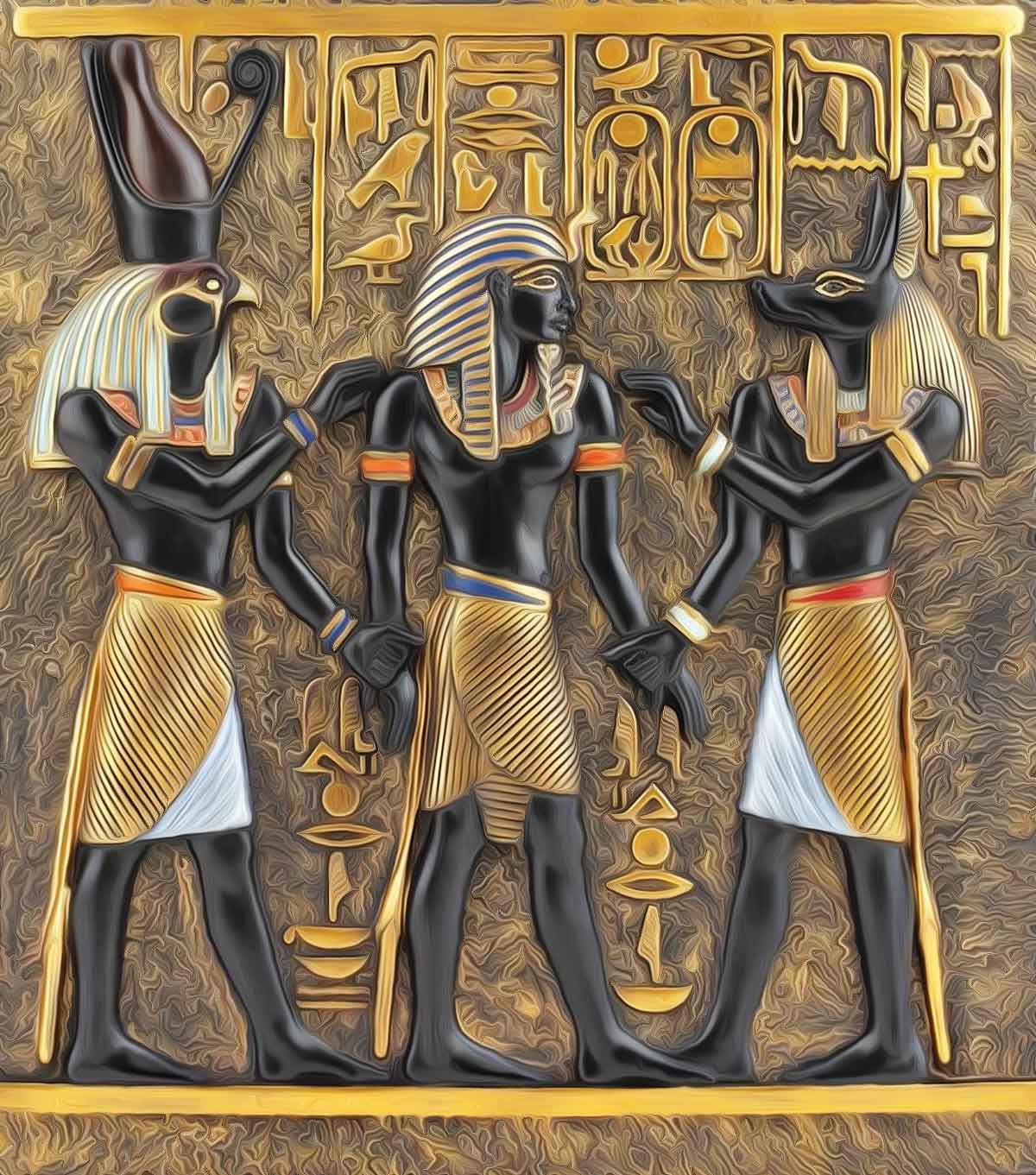 All ancient nations worshipped many gods |
Hindu gods provide a link with all Ancient gods
Ram Swarup has drawn our attention to this eclipse of the ancient Gods of many people after those people were forcibly converted to Christianity or Islam, and their temples were destroyed or converted into churches or mosques. I shall, therefore, quote again at some length from his book, The Word As Revelation: Names of Gods:
There was a time when these Gods satisfied the religious urges of their devotees. But over time, they came under attack from new Gods that were appearing on the horizon. They are by now completely replaced but the old persecution still continues though in a modified form. The new persecutors are not theologians and religious zealots but staid academicians. To them, these Gods are not false but primitive. They hold that these Gods represented the attempt of the primitive mind to express, however imperfectly, through Nature’s symbols and objects, it’s groping for a unitary principle. At this stage of human evolution, it was difficult for man’s mind to rise above the sensuous to the intellectual and the spiritual, and from the many to the one. That was left for a later generation to achieve, reaching its high watermark in Christianity and modern Europe.
If Gods are born of religious urges and spiritual intuitions, it is difficult to see how modern European Christians are superior in this respect and, therefore, how their one God could be truer than the many Gods of their ancestors.
A look at the Hindu Gods may throw light on this aspect of the subject. The Hindu pantheon has changed to some extent but the old Gods are still active and are still understood though under modified names. Hindu India has a sense of continuity with its past which other nations, that changed their religions at some later stage, lack. It is also known that the Hindu religion preserves many old layers and forms. Therefore, its study may link us not only with its own past forms but also with the religious consciousness, intuitions, and forms that prevailed in the past in Europe, in Greece, in Rome, in many Scandinavian and Baltic countries, amongst Germanic and Slavic peoples and also in several countries of the Middle East. In short, the study may reveal a fundamental form of spiritual consciousness that is wider than its Hindu expression.
This discussion should help to promote our understanding not only of Vedic religion and Vedic Gods but also of a whole archetypal spiritual consciousness that expresses itself in the language of Many Gods, and as a result, should also help us to understand better the old religions of Europe and Asia which are no more; it should also help us to see in a new light the old Gods of Egypt, Persia, Greece, Rome, the Gods of the Scandinavian and Baltic countries, the Gods of the Germanic, Celtic, and Slavic peoples.
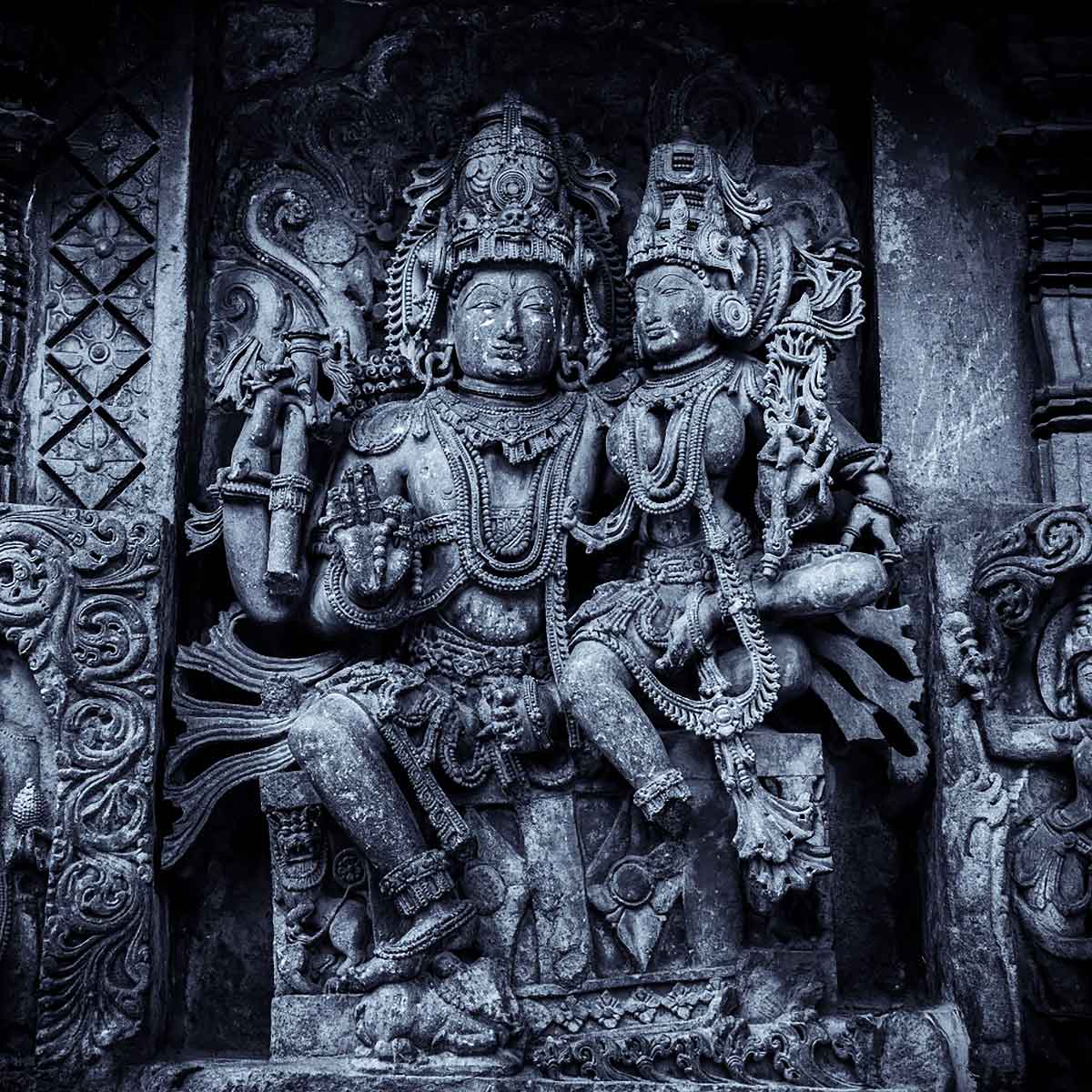 Hindu gods provide a link with all Ancient gods |
Return of Ancient gods
Ram Swarup pleads that a revival of universal spirituality should lead to a return of ancient Gods eclipsed by Christianity and Islam:
In the cultural history of the world, the replacement of Many Gods with One God was accompanied by a good deal of conflict, vandalism, bigotry, persecution, and crusading. These conflicts were very much like the wars of liberation of today, hot and cold, openly aggressive or cunningly subversive. Success in such wars played no mean role in making a local deity, say, Allah of certain Arab tribes, wins a wider status and assume a larger, monarchical role.
Looking at the whole thing from the perspective of today, it is difficult to say whether the replacement was enriching or impoverishing in the spiritual and cultural sense. In most cases like these, outer symbols change without making any significant changes in their psychic meanings. It would, therefore, be difficult to hold that the present Gods of Semitic origin are superior to the now-defunct pagan Gods. There was a time when the old pagan Gods were pretty fulfilling and they inspired the best of men and women to acts of greatness, love, nobility, sacrifice, and heroism. It is, therefore, a good thing to turn to them in thought and pay them our homage.
The peoples of Egypt, Persia, Greece, Germany, and the Scandinavian countries are no less ancient than the people of India; but they lost their Gods, and therefore they lost their sense of historical continuity and identity.
Today, there is a spirit of revolt amongst Western youths against their parent’s religion. Some are seeking light in new symbols. One of the most fruitful channels for them could be to explore the symbols of their more remote forefathers. This could help to broaden and deepen the religion of their parents with the religion of their ancestors.
What is true of Europe is also true of Africa and South America. The countries of these continents have recently gained political freedom of a sort. But it has done little to help them and to give them a spiritual identity.
If they wish to rise in a deeper sense, they must recover their soul, their Gods, their roots in their own psyche; there has to be a spiritual reassertion, a resurrection of their Gods. If they need any change, and there is no doubt they do, it must come from within themselves as a part of their own experience. If they do enough self-churning, then their Gods will put forth new meanings in response to their new needs. They have to make the best of their own psychic and spiritual gifts and discover their Gods within themselves. No people can import their God’s ready-made and rise spiritually under the aegis of imported deities, saviours, and prophets.
But one cannot retain old Gods or revive their memory artificially. One should develop a spiritual way of looking at things. One should live with these Gods and spend time with them. In a sense, all Gods are jealous Gods. They want a person wholly with themselves before they become wholly his. One has to dwell with them and meditate on them before they become vivifying forces.
Hindu society has to help the peoples of Asia, Africa, America, Europe, and Oceania to go back to their Gods, their ancient shastras which their Gods will reveal again. Hindu society can perform this onerous task only if it reawakens to its Gods, repels the attack which monotheistic creeds are mounting again on its spiritual traditions, and turn the tables on mullahs and missionaries who are stinkingly sick with self-righteousness.
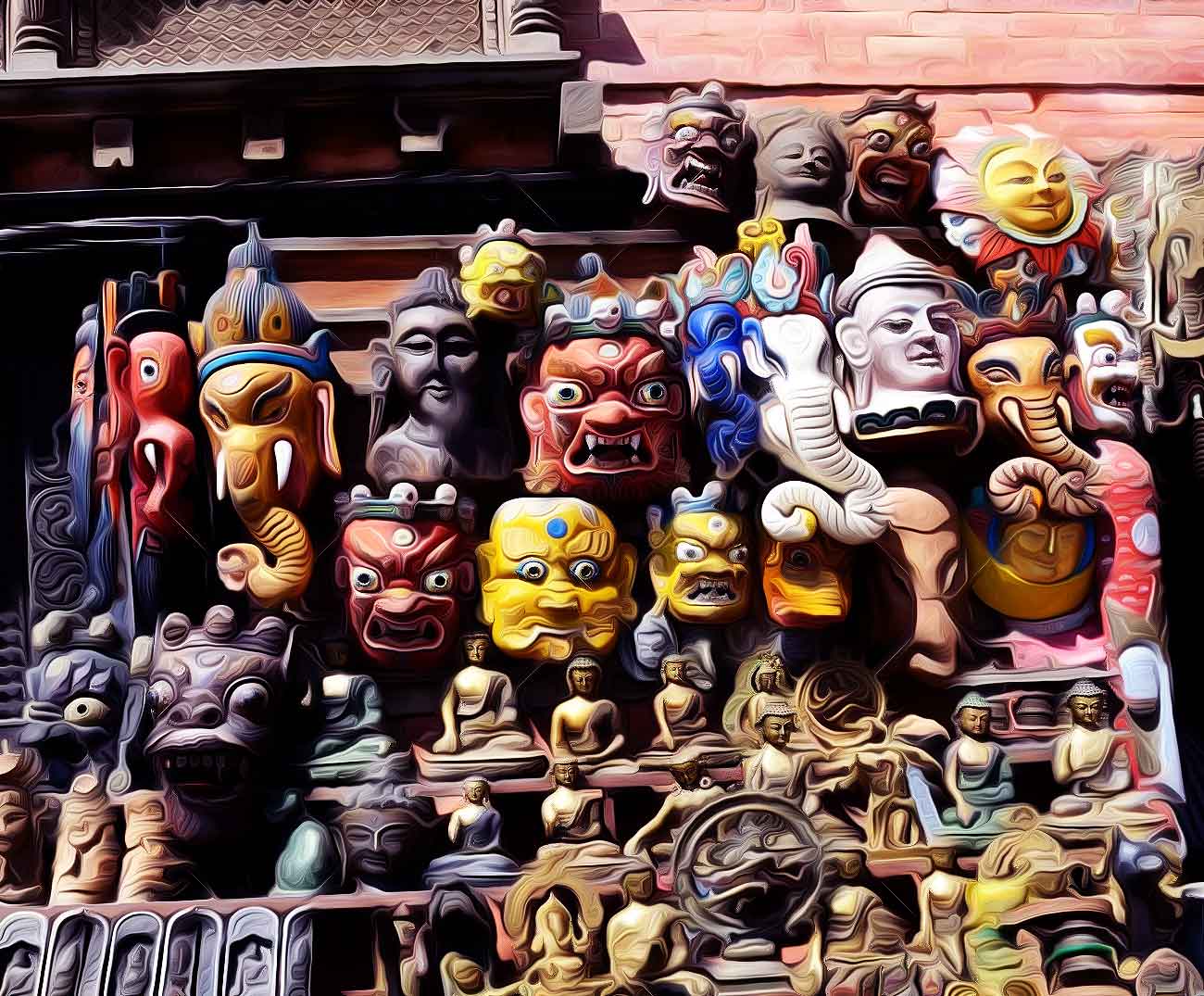 |
Monotheism is Theology, not Spirituality
The very fact that Christianity and Islam fall outside the commonwealth of this universal spirituality, goes to show that there is something seriously wrong with the consciousness which has constructed these coercive creeds. The very fact that Christianity and Islam are intensely hostile to universal spirituality expressing itself through diverse deities, goes to prove that there
is something particularly perverse in the psychology of these thoughtless theologies. A special effort has to be made to psychoanalyze the pathological behaviour of Christianity and Islam and spot the source of their spiritual sickness.
Ram Swarup has something significant to say about Monotheism which also I shall quote:
Ancient Rome, Greece, and Egypt, all polytheistic cultures, were relatively free from religious wars though they had their full quota of wars otherwise.
In polytheistic Rome too, men of different religious persuasions and sects met and built their temples and worshipped in their way. But this freedom disappeared when Christianity, the religion of One True God, took over.
Monotheism was not always a spiritual idea. In many cases, it was an ideology. It was consolidated in wars and turn, it led to further wars. There were wars between different tribes, each tribe claiming its own God to be supreme. Eventually, the Gods of the tribe that lost in battle were supplanted by the Gods of the winning side. Or, sometimes, a tribe exchanged its Gods for power. It accepted the Gods of the conquered people to consolidate its power over them. Or, perhaps, there was a larger association to create, an empire to consolidate, or other nations and tribes to conquer, and the idea of a One True God was handy in the pursuit of this object. Thus, diplomacy, the sword, and systematic vandalism, all played their part in making a particular god supreme. From the very early days, the One God of Christianity was bound up with the imperial needs of Rome. In more recent times, the Biblical God has tried to consolidate what the European arms and trade have conquered.
When the urge for unity is spiritual, the theology of One God is no bar and the seeker reaches a position no different from Advaita, from ekam sat. He realizes that God alone is, and not that there is only one God.
But if the motive for unity is merely intellectual, it helps little, spiritually speaking. God remains an outward being and does not become the truth of the Spirit. It does not even help to reduce the number of Gods; instead, it multiplies the number of Devils if Christianity is any guide in the matter. We know how Medieval Christianity was chock-full of them. In fact, they occupied the center of attention of the Church for many centuries to the exclusion of everything else. During these centuries, it was difficult to say whether the Church worshipped God or those devils. One authority calculated that the number of demons was six and a half million. According to another authority, there were 7,905,926 lesser demons presided over by 72 Princes of Hell. All of them were intriguing against the Church and were undermining its work and authority. Each of the Princes had his allotted work. Lucifer promoted pride, Asmodeus lechery, Belphegor sloth, and so on.
Christian and Islamic imperialism gave wide currency to monotheistic theologies during periods of Christian and Muslim domination over large parts of the world. These theologies, in turn, supported totalitarian tyrannies practiced by Christian and Muslim theocracies and mobilized mobs against subject populations belonging to other faiths. The worst thing that happened was that these theologies confused the language of religion and philosophy. Their impact on imbecile minds can be judged by the thesis of Dr. Tarachand and his tribe that Advaita was a concept coined by the Adi Shankaracharya in imitation of Islamic Monotheism brought to Kerala by Muslim merchants (mind you, merchants!) in the early years of the 8th century AD.
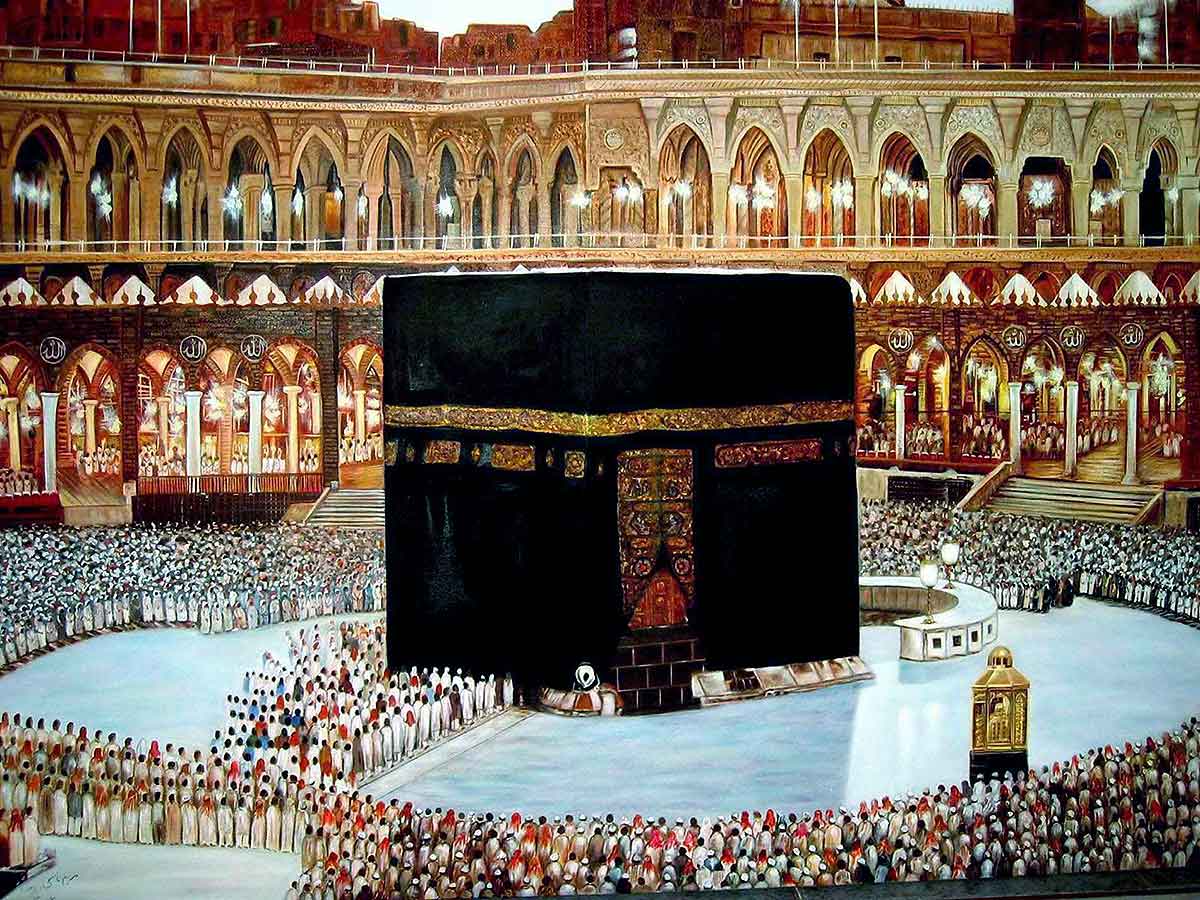 |
Monstrosities of Monotheism
Monotheism, polytheism, in fact, the whole brood of concepts born of the basic concept called theism, are products of a petrified mind and an inert intellect. These are theological concepts and not spiritual perceptions. That is why they move so mechanically, back and forth, without illumining any corner of the human mind or improving any part of human behavior. They are not only irrelevant to any practical spiritual purpose, but also positive impediments on the path of spiritual progress. Anyone who is interested in the upliftment of human life as lived should shun these concepts like a plague.
What is worse, Monotheism has manufactured several hate-filled words - infidel, kãfir, unbeliever, munkir, mushrik, heathen, heretic, hypocrite, polytheist, pantheist, pagan - which raise unbreakable barriers between brother and brother, and which divide the one human family into several warring camps. These swear words are hurled at unoffending people belonging to other faiths like stones thrown by street hooligans at peaceful citizens. These malicious words have motivated many crusades, Mihãds, inquisitions, genocides, imperialist aggressions, and campaigns for pillage and rapine. Rivers of innocent human blood have been made to flow in the service of these spiteful words, and for causes that are of no consequence at all, either for the moral upliftment of the spiritual illumination of mankind. The only way a monotheist can conceive of human brotherhood is that everyone accepts his exclusive creed.
What is still worse, Monotheism and the monstrosities that logically follow from it such as the saviour, the prophet, the revelation, the ilhãm, the church, the ummah, have been selling the most degenerate type of idolatry known to human history. Being dead to the intimations of immortality conveyed by icons of Gods, the monotheistic mind manufactures any number of myths about its all-too-human saviours, prophets, saints, and Sufis, and attributes any number of miracles to them. Being bereft of any true sense of divinity, this materialistic mind starts seeing the supernatural in the dirt and dross of its prophets and saints such as the saliva, the hair, the shoe, the shirt, and the shroud. And this mind ends up by kissing and kowtowing before these dead objects in a surfeit of sickening superstition. There is a brisk trade in holy relics till the total number or weight of each relic reaches fantastic proportions, far in excess of what had survived the prophet or the saint. Stinking tombs and sepulchers take the place of sublime temples. The less said about the slaughter of innocent animals in a round of so-called sacrifices, the better.
The monotheist reaches the limit of the ludicrous when he struts around as an iconoclast or a butshikan, saying that the false Gods of the infidels could not save themselves from his sword and fire. He secretly expects the idols to perform the same sort of miracles as he attributes to the saliva, the hair, the shoe, the shirt, and the shroud of his prophets and saints. But if he is requested that his relics be subjected to the same physical test, he loses his balance, shouts that his religion is being insulted, and takes to violence at very short notice.
No one who knows anything about the sanctity of icons has ever attributed any powers or miracles to them, except the power to point to a still greater sanctity beyond themselves and the miracles they work in human hearts. No one who knows the mystery of icons manifesting themselves has ever expected them to rise in self-defense, sword in hand, against gangsters styling themselves as ghãzîs. Yet the monotheistic mind has spread many yarns about Hindus and Buddhists believing that their icons were repositories of magical powers, and could raise deadly storms and armies of demons!
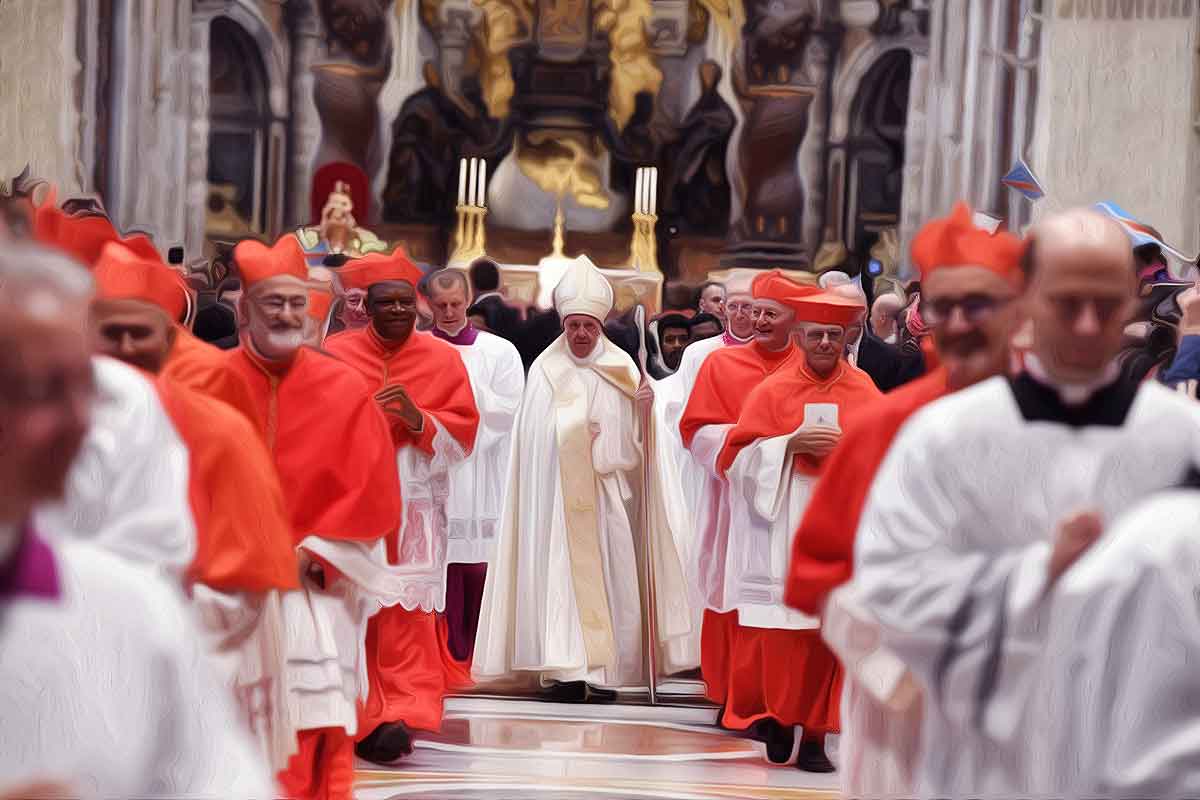 |
Piety without Universality is Poisonous
Some people are impressed by the piety displayed by some merchants of Monotheism such as poverty, penance, patience, chastity, obedience, etc. No doubt these are great virtues and can add a lot to the loftiness of human character. But piety which is not preceded by self-purification and which is not permeated by universality (samatã) born of wisdom (praMñã), can easily turn into poison in the human soul. This sort of self-flattering piety lacks charity and compassion and feeds self-righteousness as is evident in the case of Muslim mullahs and Sufis, and Christian monks and missionaries. They have been not only advocates of inhuman persecution of those they describe as infidels but also privileged members of imperialist establishments. They have always been out to save others without ever having a look at their hardened hearts and closed minds. Quite a few of them have been sanctimonious humbugs selling salvation to others without first trying to salvage themselves from hatred towards fellow human beings. St. Francis Xavier is an excellent example of spiritual lepers deluding themselves that they are spiritual healers.
The Buddha is very emphatic that mere piety leads nowhere, and saves no soul. He says: It is the blockheads who believe about me that I preach piety (shîla). I say that I teach meditation (samãdhi) and wisdom (praMñã). The self-transcendence and the opening of a universal vision in which Hindu spirituality specializes have been predicated not on piety but purification. According to the BRhadãrNyaka Upanishad, the journey is from darkness to light (tamaso mã Myotirgamaya). Piety alone cannot be of much help on this inner pilgrimage, not at all when it consists of only an outer code of conduct such as laid down in the Ten Commandments, or the Sunnah of the Prophet. It needs to be added that the shîla which the Buddha finds inadequate is much larger and loftier than the pretentious piety which is prescribed by Christianity or Islam, and which degenerates into exhibitionism more often than not. Sufis have been the exhibitionist par excellence. Read the lives of Shykh Farid Ganj Shakar and Nizamuddin Awliya, for instance.
Chapters - Defence of Hindu Society (Sita Ram Goel)
- The Situation at Present
- Sanãtana Dharma Versus Prophetic Creeds
- The Spiritual Centre of Hindu Society
- Hindu Spirituality Versus Monotheism
- The Basis of Universal Spirituality
- Revival of Universal Spirituality
References:
Defence of Hindu Society - Sita Ram Goel - Voice of India, New Delhi
 Support Us
Support Us
Satyagraha was born from the heart of our land, with an undying aim to unveil the true essence of Bharat. It seeks to illuminate the hidden tales of our valiant freedom fighters and the rich chronicles that haven't yet sung their complete melody in the mainstream.
While platforms like NDTV and 'The Wire' effortlessly garner funds under the banner of safeguarding democracy, we at Satyagraha walk a different path. Our strength and resonance come from you. In this journey to weave a stronger Bharat, every little contribution amplifies our voice. Let's come together, contribute as you can, and champion the true spirit of our nation.
Please share the article on other platforms
DISCLAIMER: The author is solely responsible for the views expressed in this article. The author carries the responsibility for citing and/or licensing of images utilized within the text. The website also frequently uses non-commercial images for representational purposes only in line with the article. We are not responsible for the authenticity of such images. If some images have a copyright issue, we request the person/entity to contact us at This email address is being protected from spambots. You need JavaScript enabled to view it. and we will take the necessary actions to resolve the issue.
Related Articles
- Now Bharatwasi can see 3D visualization of Ram Mandir construction progress in detail through a video released by Shri Ram Janmabhoomi Teerth Kshetra Trust: Ayodhya
- Mahakal Temple in Ujjain to get expanded complex with Rs 714 crore in such a way that there will be a feeling of grandeur and divinity: Another reason for devotees to celebrate after Kashi Vishwanath corridor
- The Basis of Universal Spirituality - Defence of Hindu Society
- PM Narendra Modi inaugurated the Statue of Equality of Sri Ramanujacharya and emphasized 'Progressiveness does not mean detaching from one’s roots and that there is no conflict between progressiveness and antiquity.'
- 'Older than history, older than tradition, even older than legend...': The millennia-old history of Kashi
- Temple city Madurai grandly celebrated the Chithirai festival, devotees thronged streets, got darshan of deities Meenakshi, Sokkanathar, and Kallazhagar: “Govinda” “Hara Hara” chants reverberated in Madurai with pomp
- A new symbol of Hindutva pride, Shri Kashi Vishwanath Temple Corridor
- RTI reply revealed that keys to the treasure room 'Ratna Bhandar' of Puri Jagannath temple which has a lot of gold, silver, and precious jewels donated by devotees and kings over the centuries have been ‘missing’ since 1970: Odisha
- “The bigmouths never visited Lord Ram’s birthplace and kept on playing politics”: Ram Mandir chief priest says only BJP cares about Ram Mandir, Modi did Shilanyas and CM Yogi visited 40 times
- Maa Annapurna returns to India after 107 years of exile in Canada: Murti will be installed at Kashi Vishwanath Mandir in Varanasi














